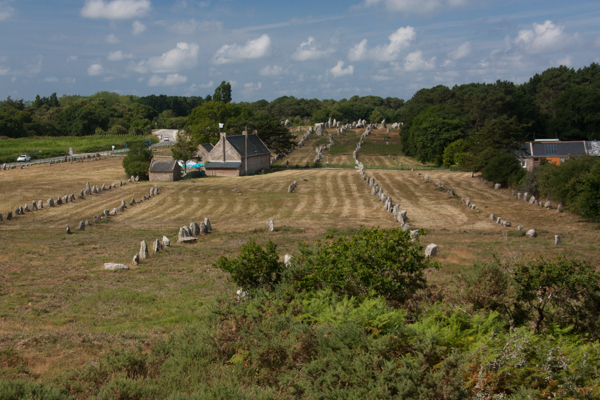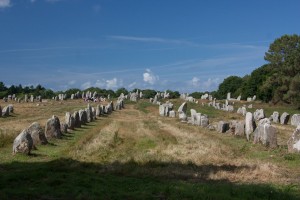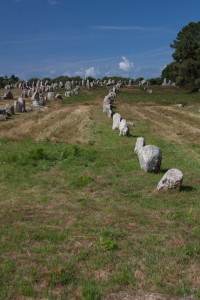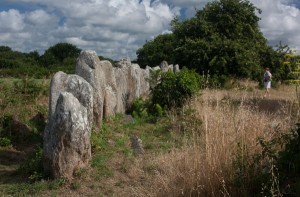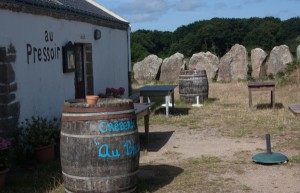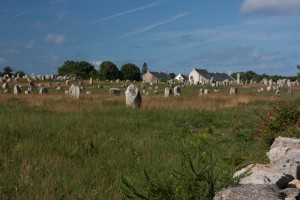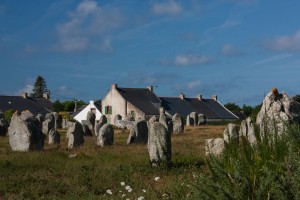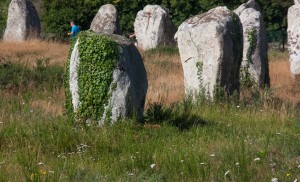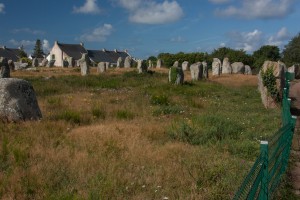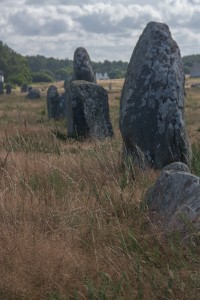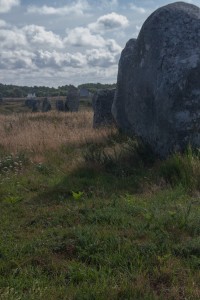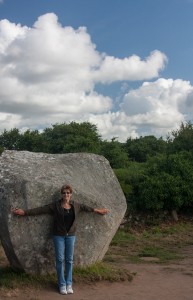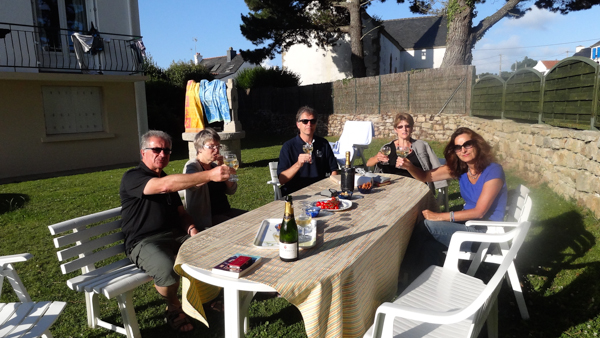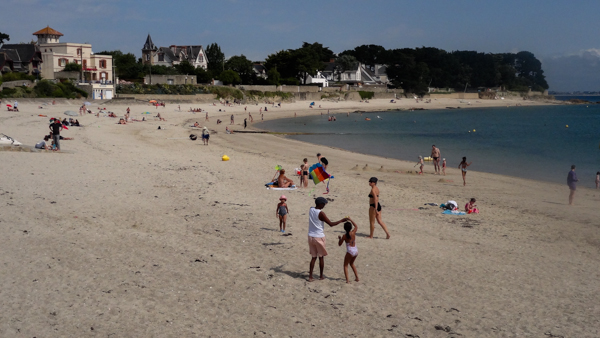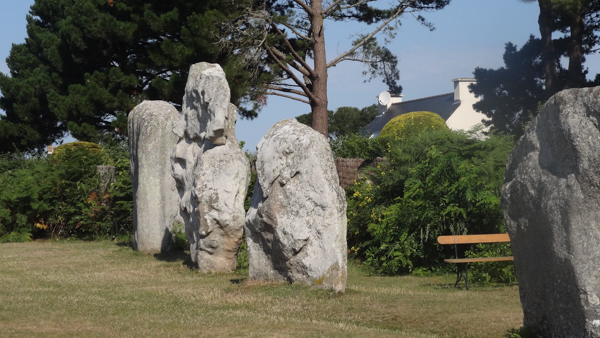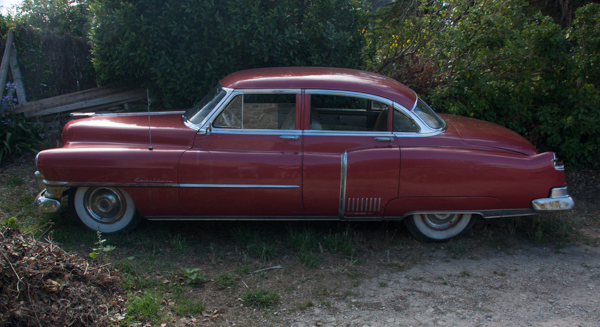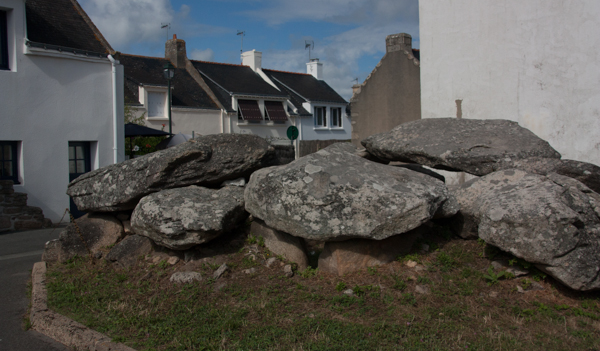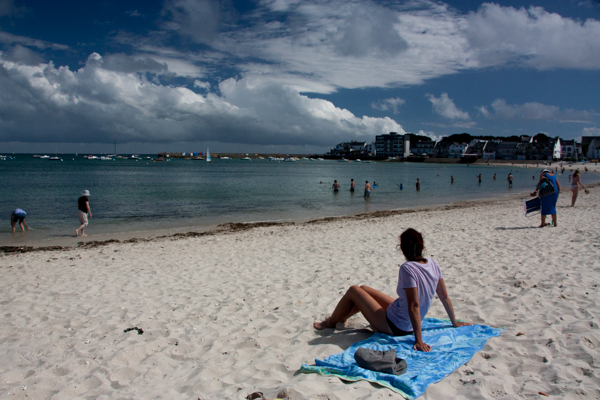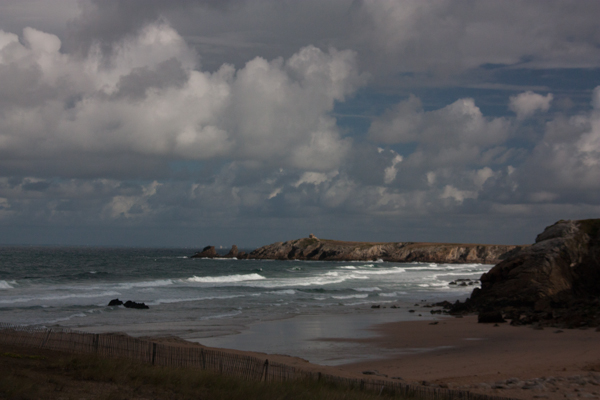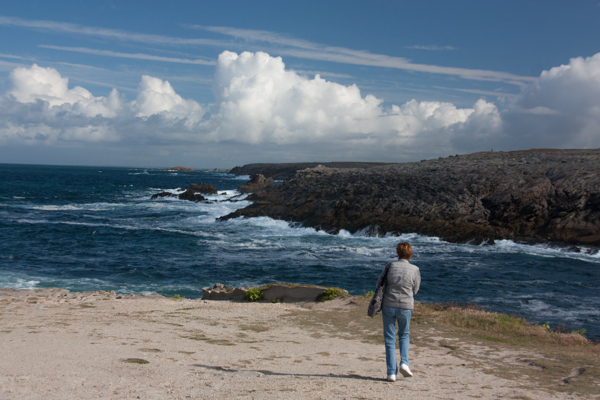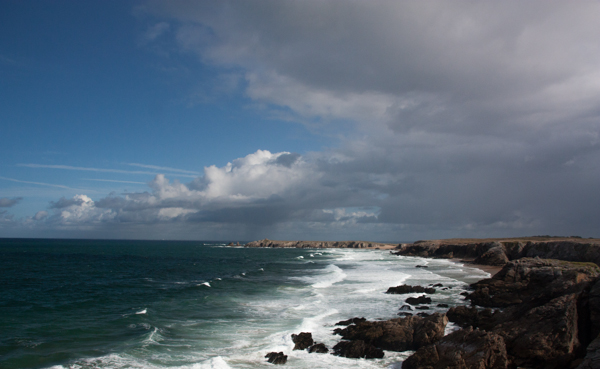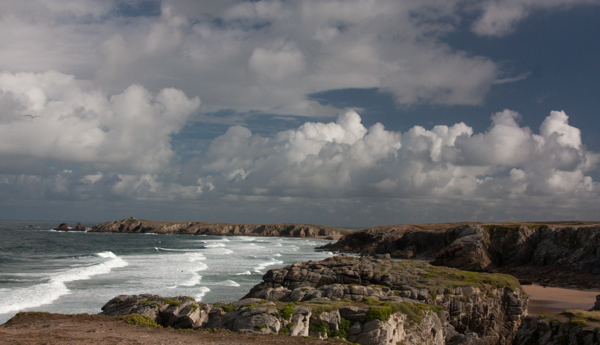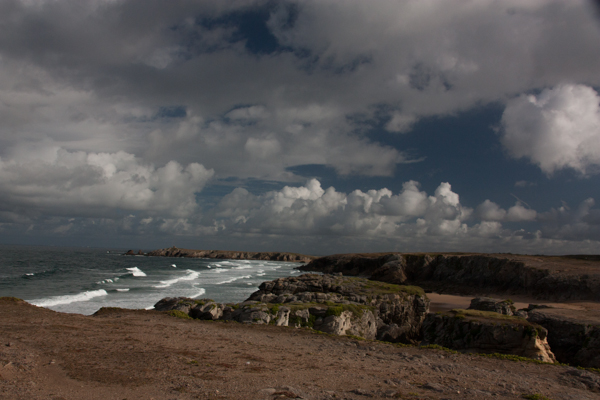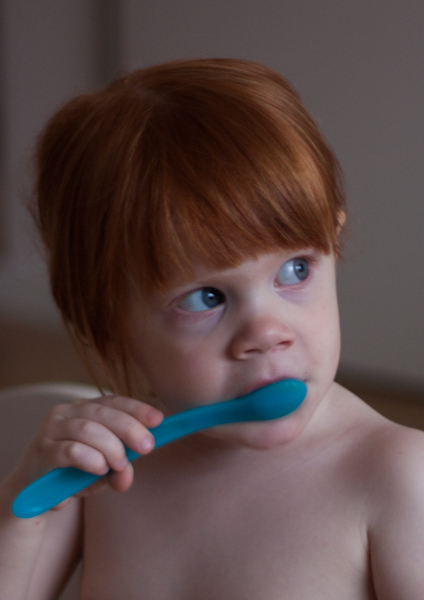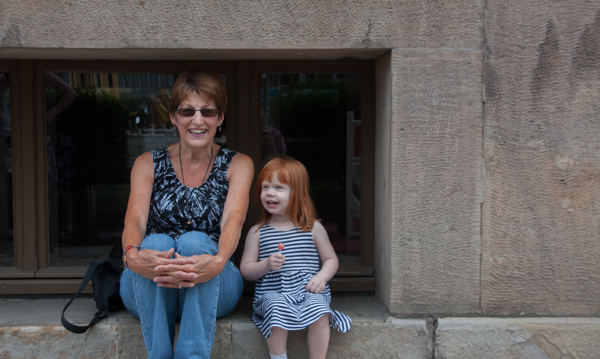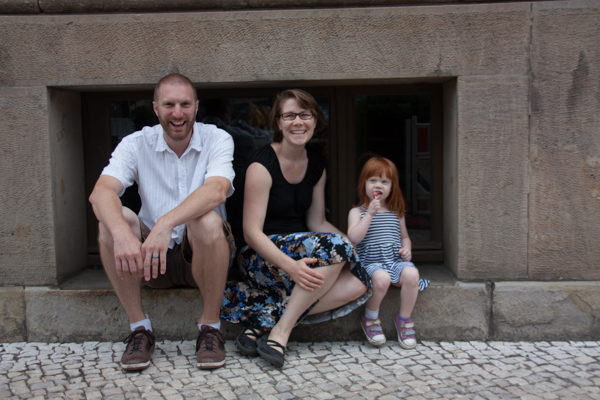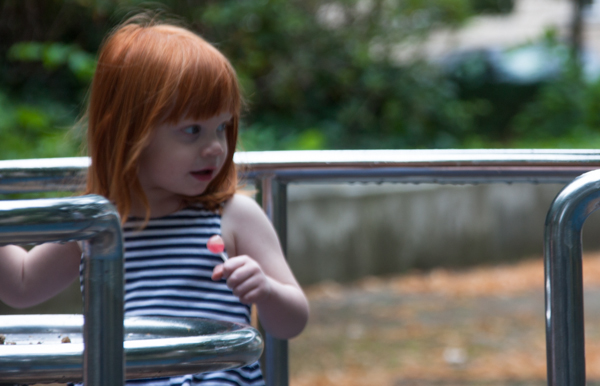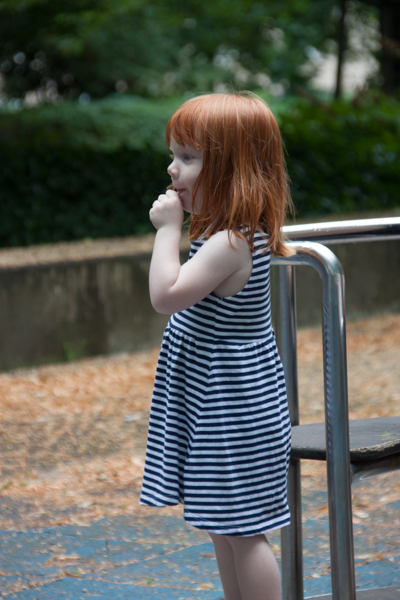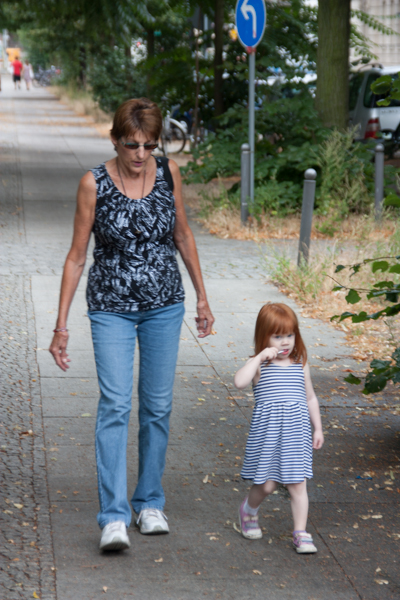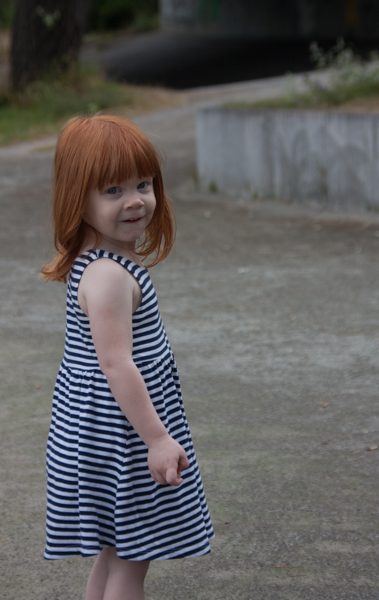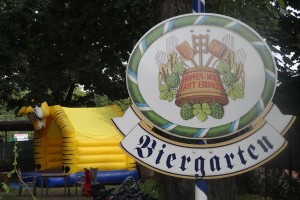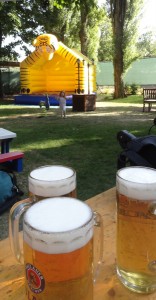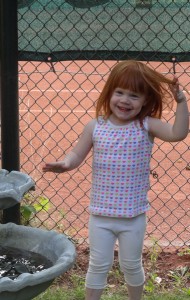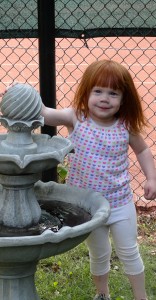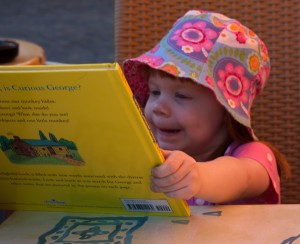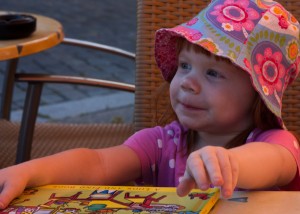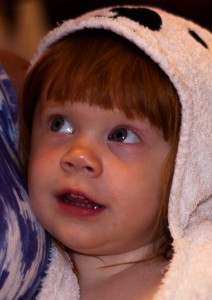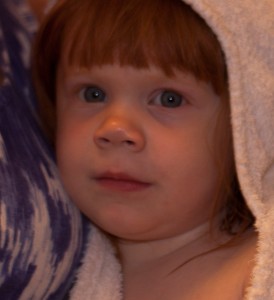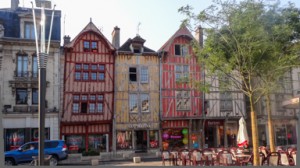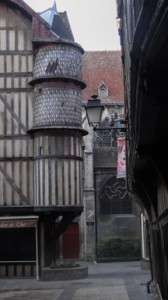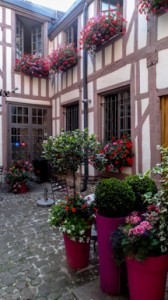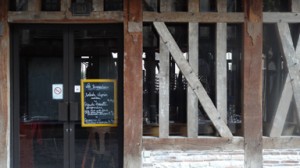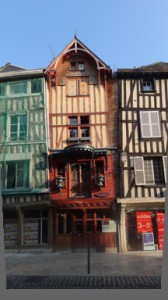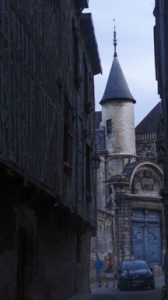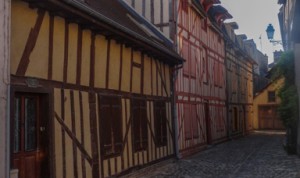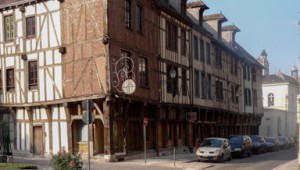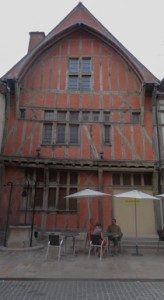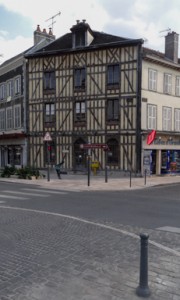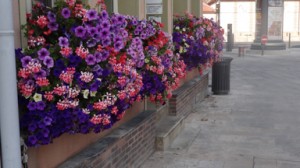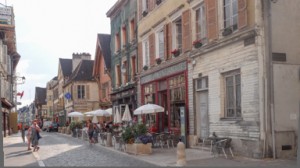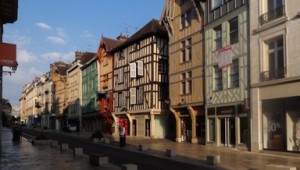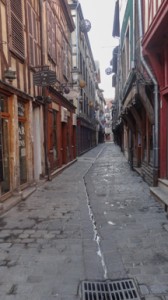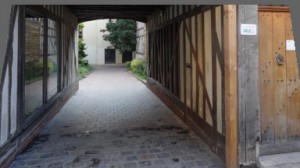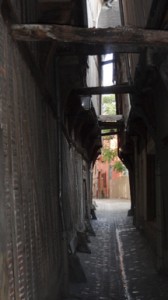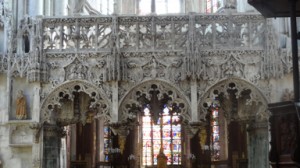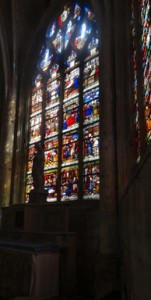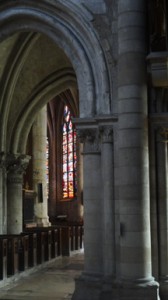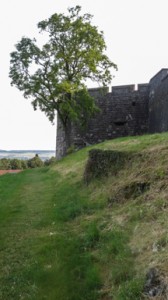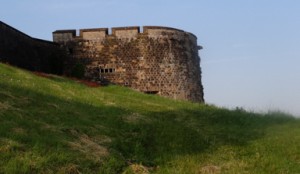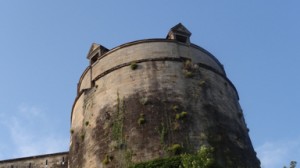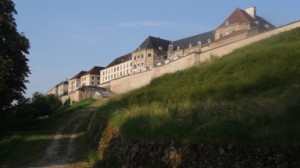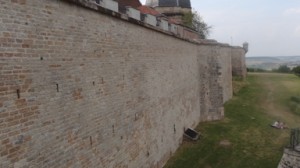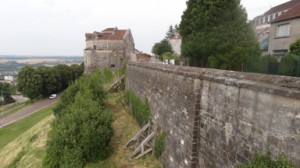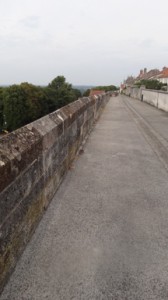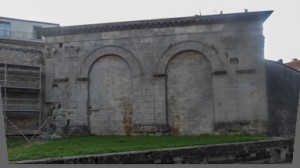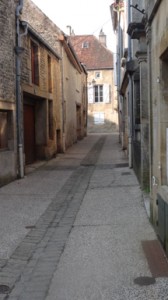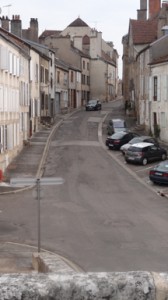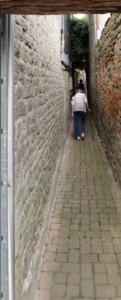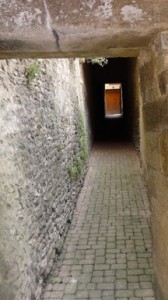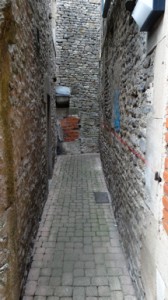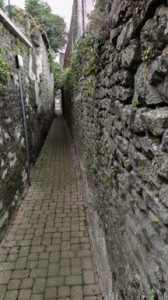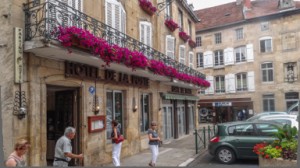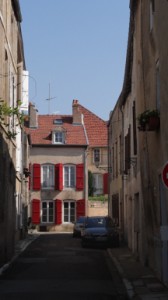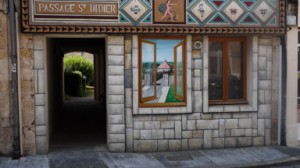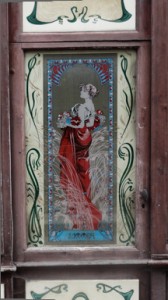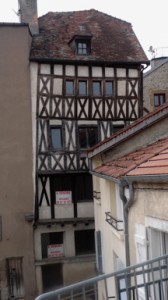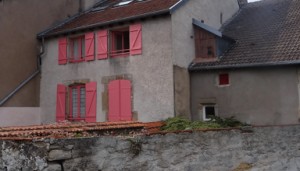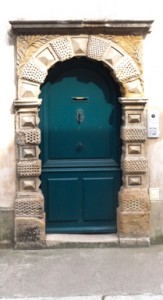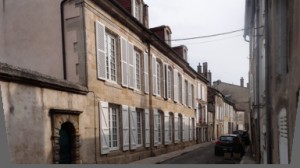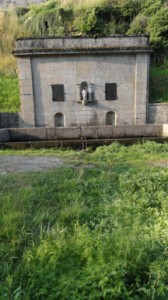Berlin has a fascinating political history, which is on full display for those willing to look a bit. We have had the great fortune to have an amazingly knowledgeable guide to show us this aspect of Berlin and explain it to us in terms we can understand (that would be Craig, who has an encyclopedic knowledge of Berlin). Today I’ll write about some things the East German Communist government left behind and how they appear today.
By the early 1950s, the German Democratic Government (GDR), which was largely a puppet government of the Soviet Union, was firmly in charge in the east Berlin sector allocated to the Soviet Union at the end of World War II. Housing was in very short supply still, and so the GDR decided to build a street of apartments that would a.) add to the pool of housing; and b.) show the world that the GDR was providing excellent living conditions for the “workers.” The result, named Stalinallee, still exists and is, I think, one of the most intriguing streets I’ve ever seen. (I might point out that Stalinallee has been named “Karl-Marx-Allee” since 1961.)
For about a mile and a half, Stalinallee was constructed with apartment buildings that were different, but similar in height and general design, so the street has an amazing architectural coherence that exists in few places. It is 100 yards wide, with four lanes of traffic, sidewalks thirty feet wide and trees down both sides and on a median strip. It is, as the GDR planned, an impressive sight. Today, many of the buildings have been renovated to repair the damage of years (just because the GDR had the money to build them didn’t mean it had the money to maintain them) and contain desirable – though very small – apartments and stores.
Okay, I know: a picture is worth a thousand words…
-
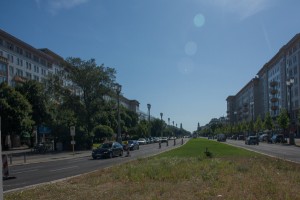
-
Looking down the start of Stalinallee. It’s 90 meters wide.
-
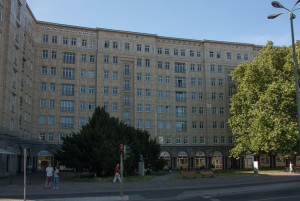
-
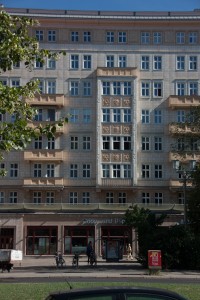
-
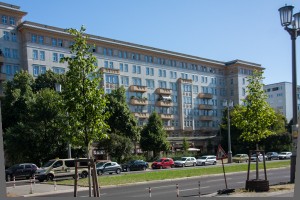
-
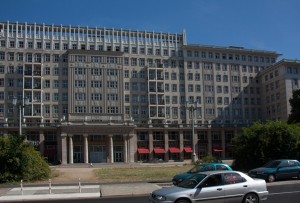
-
A facade, clearly showing the “wedding cake” top that gave this architectural style its name. Stalin evidently loved this style, so it appeared on many Soviet buildings of the 1940s and early 1950s.
-
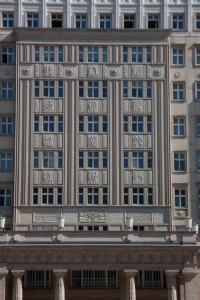
-
Bas-reliefs on a facade, showing happy workers of the German Democratic Republic (which was, of course, neither democratic nor a republic).
-
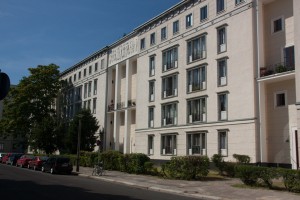
-
Not quite Stalinallee. This building was the prototype for the Stalinallee apartments, designed by the same architect. They are actually quite graceful and beautiful.
Though the apartments on Stalinallee were said to be for the “workers” (who, I might add, rebelled in 1953 at the low pay and high hours they had to work; the resultant suppression of the rebellion by Soviet armed forces took at least 125 lives. So much for the “happy workers” building a “workers paradise!”), it didn’t work out that way. As the apartments were completed, nearly all went to Communist Party functionaries; few workers actually lived here. In 1961 there was a discussion – of sorts – about re-naming the street, since by then it was known and publicly acknowledged that Joseph Stalin had been a murderous thug of the worst kind. Arguments for and against the renaming raged, but the German Democratic Republic, which wanted the renaming, won, in the way it won most arguments: it ignored the opposition. One night a huge statue of Stalin disappeared without a trace, and all the street signs were changed from Stalinallee to Karl-Marx-Allee; overnight, Stalinallee was no longer.
Stalinallee, Karl-Marx-Allee: makes no difference. I think this street is one of the most interesting and beautiful streets anywhere. I can’t imagine a visit to Berlin without a stroll down it.
Then we went to another Communist monument that went awry. Ernst Thälmann was the leader of one of the two communist parties in the 1920s and early 1930s. Unfortunately, the two communist parties spent so much time and energy fighting each other that the Nazis were able to take control, to the detriment of every communist in the country. In 1934, Thälmann and many others were arrested by the Nazis. Thälmann spent eleven years in solitary confinement, was then transferred to the Buchenwald concentration camp and executed there in 1944.
After World War II, the communist East German government mythologized Thälmann as a hero of the anti-fascist workers of Germany. When a new housing area was developed, it was named after Thälmann and a huge monument was raised to him. Here’s a picture of that monument, which still exists (note that Laurie is showing solidarity with Thälmann, with that raised fist); this is a HUGE freaking monument – over 40 feet high:

Laurie shows solidarity with Ernst, with a fist and a determined look.
The disintegration of East Germany pretty much put paid to the myth of Thälmann. Research showed that many of his heroic anti-fascist activities were, well, myths. In fact, it turns out that he was far more interested in fighting other communists. But mostly, no one cared anymore about “anti-fascist workers’ revolution” leaders; today, his monument is pretty much ignored and unmaintained. Why isn’t it torn down, you might ask? That possibility has been raised and the result has been that because the thing is so big, no one knows how to tear it down. So it remains, unloved and ignored. But I have to say, it was pretty amazing to visit this monstrosity, and think of the efforts at propaganda made by the German Democratic Republic.
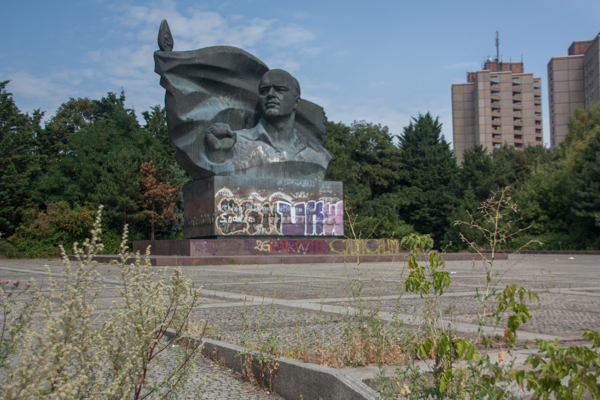
Lenin
In 1917 Vladimir Lenin was in exile in Switzerland. As the Russian political scene descended into chaos, he wanted to return to Russia and lead the Revolution, but no country would allow him to transit through (he was pretty well-known as a trouble-maker). Finally, the German government arranged for him to transit Germany in a sealed railway car. He arrived in Berlin at one station, from which the railway car had to be shipped overland to another station, the one shown below. It was from this railroad station that he (and 30 followers) left Berlin, next stop: Russia and Revolution. Interestingly, he disappeared from sight for eight hours while in Berlin and it’s thought that during those eight hours, he received a huge amount of funding from people or groups unknown – maybe the German government, which wanted to de-stabilize its long-time foe, or a private financier – because he left Switzerland almost penniless and arrived in Moscow with tons of money to finance the revolution.
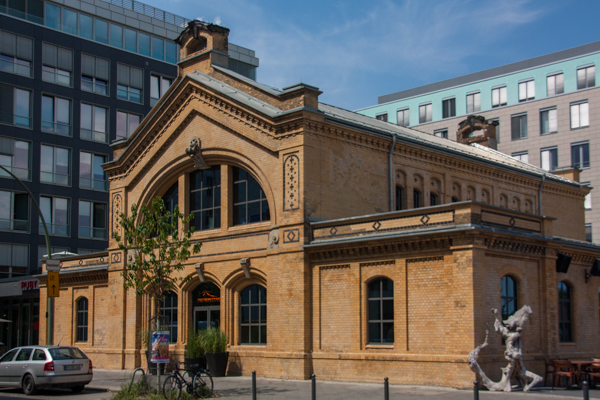
Lenin left Berlin for Russia from this train station in 1917.
Templehof Airport
The Templehof Airport may be the most historic airport anywhere. In 1948/1949, it was the airport where almost all the planes of the famous Berlin Airlift landed. Today, the field and its amazing buildings remain, but not as an airport. The buildings are being converted to offices and the field, with runways and taxiways intact, are open to the public, for walking, running, riding and general enjoyment.
-
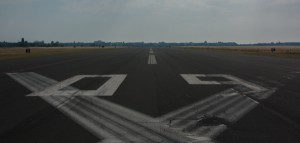
-
The closed runway
-
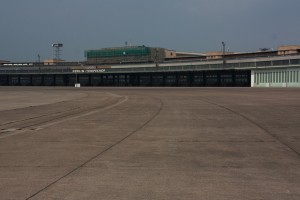
-
The terminal, from the tarmac.
-
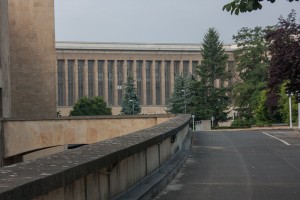
-
The main building
-
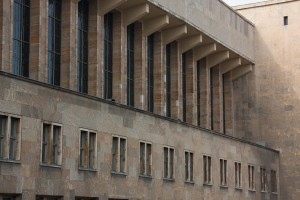
-
Nazi architecture, at its most overwhelming
Laurie asked me to add some info about the Berlin Airlift, so:
After WWII, Berlin was composed of four sectors, one each controlled by the Soviets (East Berlin), France, Great Britain and the United States (those three sectors together comprising West Berlin). The four countries were supposed to jointly govern Berlin, but it was, of course, the Soviet Union against the Allies all the time, and the Soviets wanted to control all of Berlin. In 1948, the Soviet Union decided it could force the Allies out by blockading all land and river routes to Berlin; the Soviets believed the Allies could not and would not expend the effort to keep West Berlin (which was essentially an island in Soviet-controlled East Germany) alive, and the Soviets would be able to establish control over West Berlin.
They guessed wrong. The Allies launched an unprecedented airlift to supply West Berlin. Because West Berlin was completely cut off from West Germany, the Allies had to fly in everything – food, coal, equipment, everything. After a rocky start, the Berlin Airlift settled into an astonishingly effective routine: airplanes left three airports in the West carrying supplies, flew to Templehof Airport, where they were unloaded quickly,and returned to the West. At its peak, airplanes landed every 30 seconds, 24 hours a day. Crews were given coffee and food at their airplanes (served by hand-picked young German girls); if a plane approaching Templehof could not land for some reason (the preceding plane not clearing the runway quickly enough, for example), the plane aborted the landing approach and flew back to its home base; there was no way for it to re-enter the landing pattern without disturbing the flow of flights.
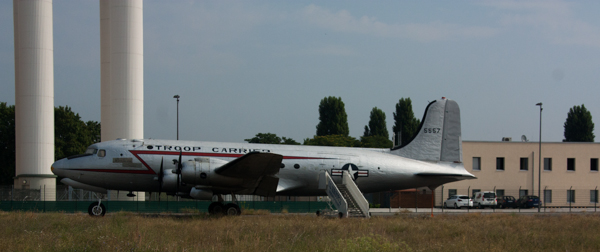
A somewhat tired C-54, the type of airplane that flew the most part of the Airlift supplies. It could carry about ten tons per flight.
In the eleven months of the airlift, Berlin was supplied with an astonishing total of over 2,236,000 tons of supplies, including over 1.4 million tons of coal and an entire coal-burning electricity generating plant.
In May 1949, the Soviets realized the Allies could continue to supply Berlin as long as necessary. Without ever admitting defeat they announced that the “technical problems on the roads and railways” that had closed them had been corrected, and land traffic could move again. Afterwards, Berlin settled into clear East-West sectors that went their separate ways and by 1951, there was no pretense of Berlin being one city – it was a communist East Berlin and a capitalist West Berlin. This was most clearly seen when, in 1961, the Soviets erected the Berlin Wall.
